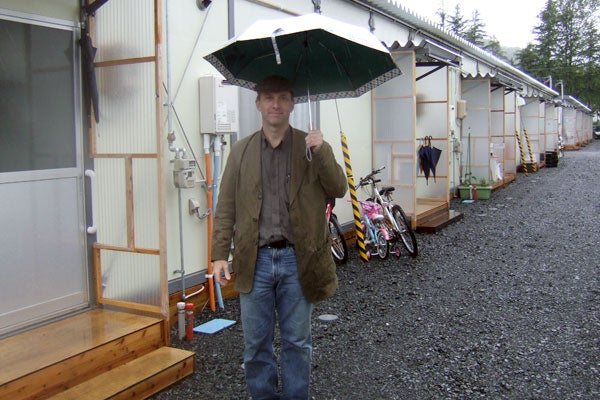
Rebuilding after a tsunami
Published: March 9, 2012
It has been a year since a 9.0 magnitude earthquake rocked the northeast coast of Japan on March 11, 2011, generating a tsunami that caused tremendous devastation.
According to the U.S. National Oceanic and Atmospheric Administration, the highest wave was 38.9 metres in the Iwate Prefecture and, as of Sept. 30, 2011, there were 15,749 deaths reported and 3,962 were still missing nationwide.
How does a society that has experienced such destruction and devastation rebuild? It’s a question that André Sorensen, an associate professor of urban geography at the University of Toronto Scarborough and a research associate at U of T’s Cities Centre, is exploring.
“Japan has a long history of big disasters,” said Sorensen, an expert on civil society, city planning and the history of urbanization in Japan. “It’s a densely populated place that has severe earthquakes, typhoons, hurricanes and fires.”
Sorensen is currently working on a project that looks at the reconstruction and planning processes for the areas hardest hit by the tsunami.
“I am most interested in the planning process,” said Sorensen. “How is the process of planning changing the conception of how the settlements ought to be rebuilt? How are local people involved in decision-making?”
Sorensen is studying two areas: the Miyagi Prefecture, whose capital city is Sendai; and the Iwate Prefecture. Both are located in the Tōhoku region, the area most affected by the tsunami.
He has seen the aftermath of the destruction first hand and has also seen some remarkable progress in a short period of time, accomplished with civic input.
By the time Sorensen visited the region last May, all roads were passable and clean-up crews were well into demolishing the remnants of buildings. When he visited again in November, the wreckage in the destroyed areas had been cleared away. 
“But they were still dealing with huge piles of debris,” said Sorensen (See photo, right). “In Sendai, the concrete and clean fill was being made into a huge sea wall: a safety precaution for next time.”
An important step in the rebuilding process took place last summer, he said.
“The Japanese government surveyed the residents of the 236 settlements along the coast of Tōhoku,” Sorensen said. “They asked residents if they wanted to rebuild onsite or relocate to a safer area.”
Given that since 1915 there have been nine tsunamis in Japan caused by earthquakes with a magnitude of 7.5 or greater, the majority of residents were eager to relocate.
“About 80 per cent of residents in most of the settlements said they wanted to move to higher ground,” Sorensen said. “In terms of building safe settlements, it doesn’t make sense to leave the residents on sea level.”
Creating 236 new settlement areas that are less vulnerable to disasters will be a huge challenge for planners, noted Sorensen.
“It’s about relying on civil society, volunteers and self-organization,” he said.
Already thousands of citizen-led community and planning groups known as machizukuri have been involved in the rebuilding process. To facilitate efforts, the national government has brought in planners and planning researchers affiliated with the City Planning Institute of Japan and has designated a lead planner for each settlement.
Sorensen said the planners travel from places such as Osaka, Tokyo and Sendai every week to meet with local stakeholder committees, including a variety of citizen groups, business and neighbourhood associations and fishing co-ops to determine the priorities in each area.
The government has also offered to buy homes at their pre-disaster value so the residents, many of whom are elderly with limited financial resources, can afford to rebuild in new settlement areas.
Planners estimate it could take between five-to-10 years to rebuild.
“What probably would have happened 50 years ago is that central government ministry officials would have drawn up plans and rebuilt the communities with very little community interaction,” Sorensen said. “This time the national government is encouraging local governments to take the lead, and there have been extensive consultation processes with local stakeholders.
“Most of the money for rebuilding is coming from central government, however, as well as some major infrastructure projects, and technical guidelines, and planning advice. So a major question will be who actually ends up making key decisions, who is involved at different stages of the planning and reconstruction process and to what extent local priorities and views get incorporated into plans.”
Sorensen will return to Japan this spring to continue his research.


